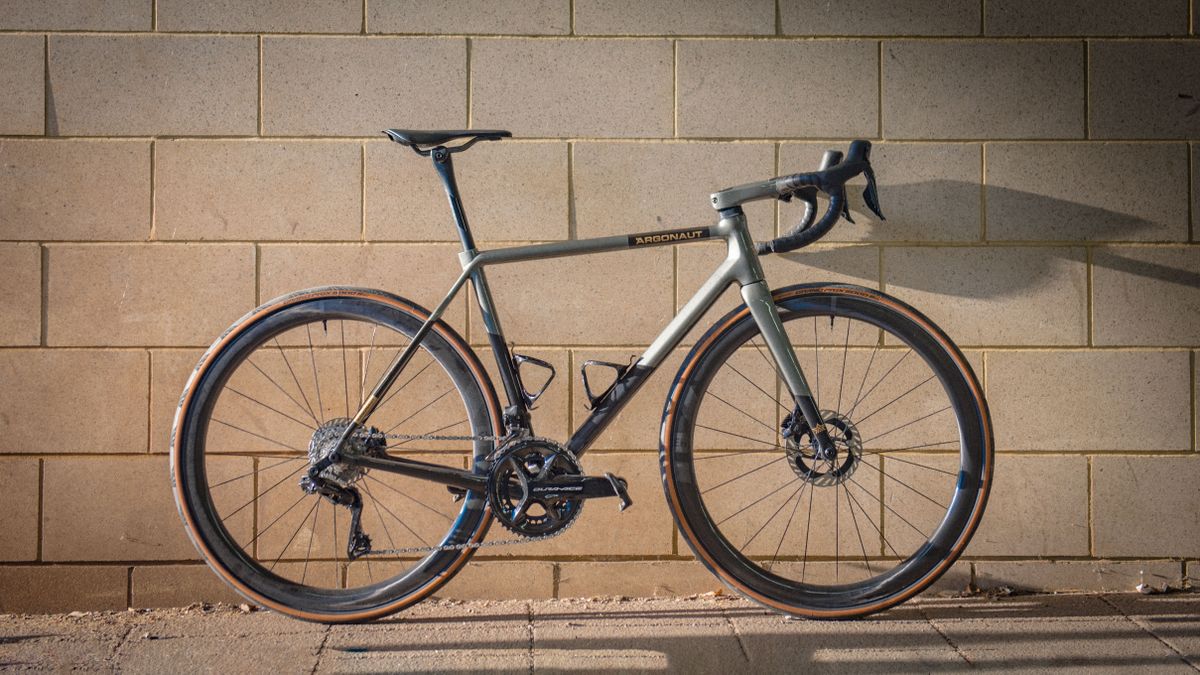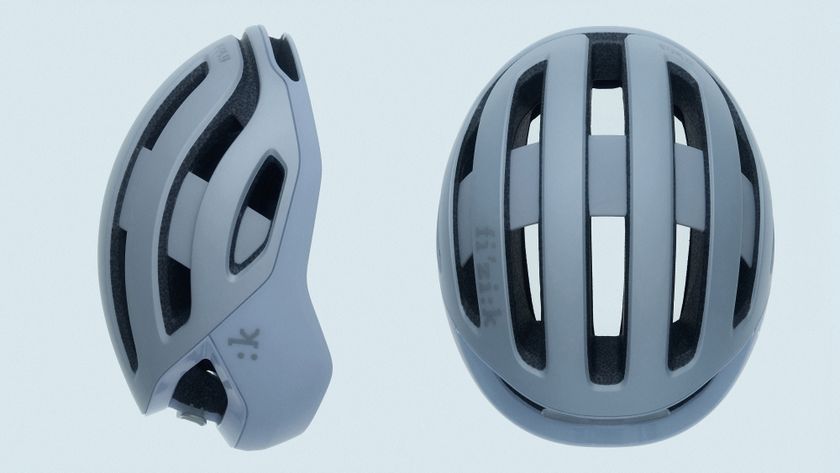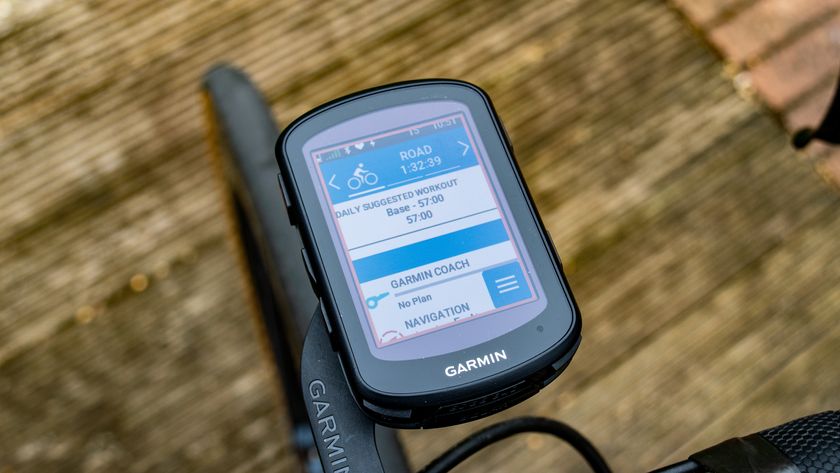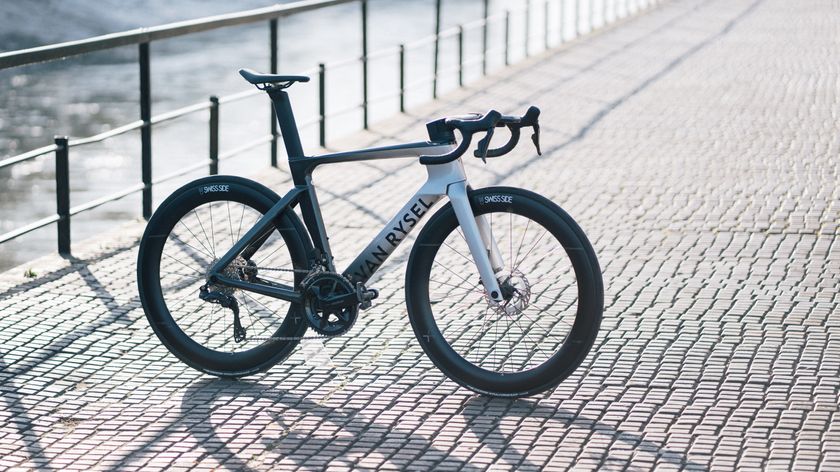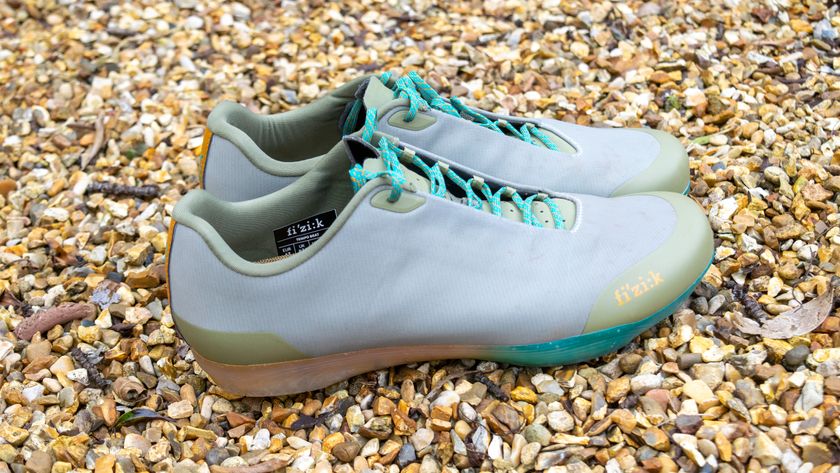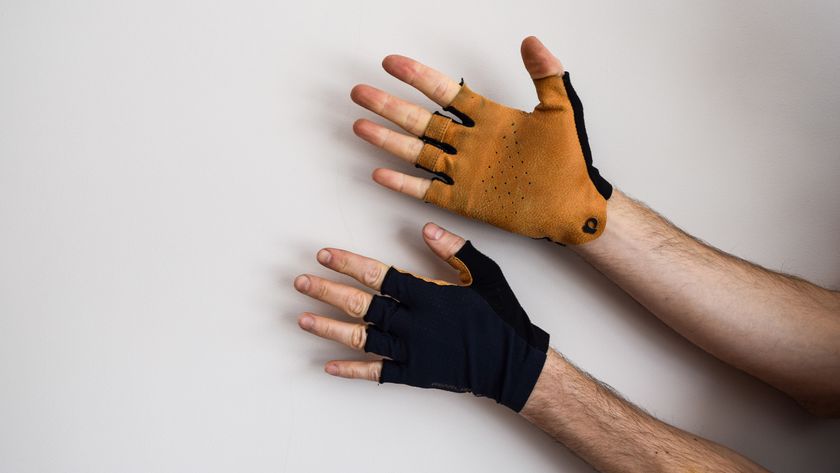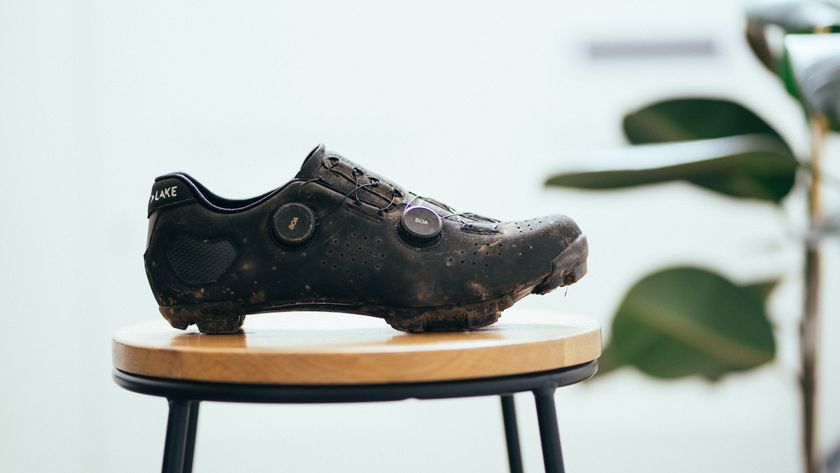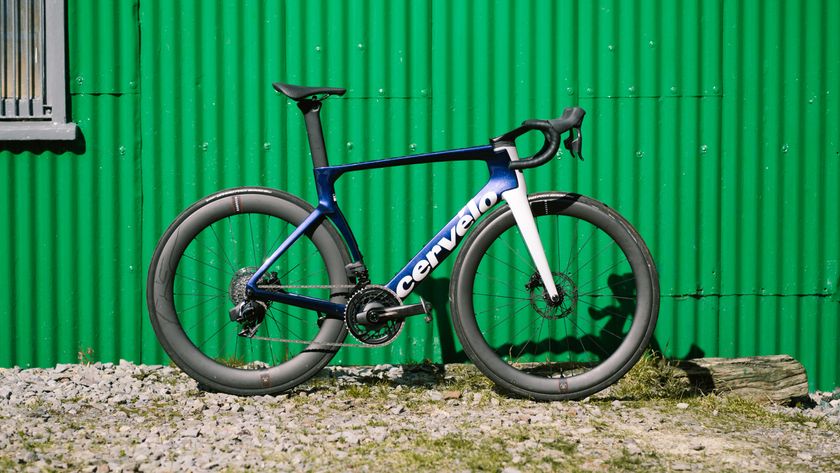Cyclingnews Verdict
A truly unique piece of bike design that offers an emotional connection as well as the highest performance. A true dream bike in the wild.
Pros
- +
Exceptional engineering
- +
Beautiful design and finish
- +
Highly customisable
- +
High performance
- +
Excellent ride quality
Cons
- -
It comes at a price
You can trust Cyclingnews
Price: $15,000 as specced / $8500 - full custom geo frameset
Weight: 7.3Kg- Size 56
Sizes: 12 off-the-shelf, or fully custom
Groupset: Shimano Dura-Ace Di2
Wheels: Argonaut 43 Wheelset
Tyres: Continental GP 5000 S TR
What makes a dream bike? Sometimes it’s the bike that won the Tour de France, ridden by a sporting idol. Sometimes it's a custom-made piece of rolling art, crafted from titanium or steel. Occasionally it's the product of a bike brand with a compelling story or a magnetic frame builder at its heart. In recent years, though, there’s emerged a growing divide between the very best Far Eastern mass manufacture frames - boasting lighter weight, better aerodynamics - and the homegrown custom forever frame built with love.
Argonaut, a North American bespoke bike brand, makes a bright proposition - a bike with all the weight-saving, precision manufacturing of factory-produced “monocoque” carbon moulding, but handmade, homegrown and with a carbon layup bespoke to the very last fibre.
Built-in Portland Oregon, the RM3 is a striking intersection of the latest in mass-production bike engineering and homegrown customisation and attention to detail. The RM3 is the brand's newest flagship offering on the roadside, and at a glance, it shows everything that has changed in road cycling in the last 10 years.
Flashback to the hazy days of 2014 and a high-end custom bike would have dramatic differences - disc brakes were exceedingly rare, tyre clearance was 28mm at a push, cables were ornately exposed and typically round tubes would be bound together in ornately wrapped carbon joints. While that latter feature presented some beautiful bikes and elegant custom design opportunities, it was also a design which passed up some of the advantages of mass-manufactured carbon frames.
Despite the Argonaut’s RM3 classic curves, it boasts the latest in wide tyre clearance, disc brakes and versatility, but it’s the engineering story below the skin which really sets the RM3 apart.
It would be easy to unroll the full history of Argonaut since its inception in 2007 - but that perhaps deserves a separate article. To tell the story of this RM3, though, we at least require a deep dive into the process behind the brand. So excuse me while we get a tad granular.



The myth of the Argonaut
In the past, we’ve discussed the prejudices which may power the interest in handmade bikes not made in the Far East. The RM3 is made from start to finish in Argonaut’s facility in Oregon, but that isn’t motivated by polarising away from mass manufacturing.
“We do everything here in-house,” Ben Farver, owner, founder and principal bike-builder of Argonaut explains. “We CNC cut our own tooling, we make our own mandrels, we 3D-print the moulds that make the mandrels – we do every part of the bike's construction here in-house. That’s in addition to paint and final finishing.”
That said, Farver doesn’t feel that gives Argonaut automatic bragging rights. “I don't think that domestic or US manufacturing is better in and of itself,” he says. “But it allows us to be more nimble and also more freedom to make iterations and improvements along the way, rather than you have to order batches of 200.”
While Farver started in steel, the brand has since moved to carbon fibre and honed in on a specialist approach to frame production.




Argonaut’s process is similar to what we might see in Far Eastern factories using high-pressure moulding. Typically the process involves compressing metal moulds onto carbon fibres laid on an inflated silicon blader - where the heat and pressure will set the fibres and resin in place to form frame tubes. In its Oregon base, Argonaut makes a slight deviation from this, though.
“We have a unique process that we call high-pressure silicone moulding,” Farver explains. “And it's essentially referred to in the wider composite industry as trapped rubber moulding.”
Here, it’s Argonaut’s mandrels - essentially the internal blank that carbon is pressed against - where the innovation centres.
“Rather than wrapping prepreg around a bladder - like a latex bladder - and then putting that in the tooling and then inflating that bladder to create the internal pressure to fuse the layers of carbon, we lay up on a silicone mandrel,” says Farver. “That mandrel is basically a shrunken shape of the frame part, which then just goes into a CNC machined aluminium cavity that is then bolted together and then we get the pressure from the silicone as it's heated, it expands. And that's what creates the interior pressure that fuses layers of carbon together.”
Argonaut has gone a bit further with customising the process, too. “We just got approved for a patent for this process,” Farver says. “There's two parts of it the process of 3D printing the mould that makes the mandrel and then the use of this internal aluminium skeleton.”
This talk of an aluminium skeleton led me to wonder how the solid mandrel is removed after the frame tube is finished.
“The aluminium skeleton does two things. It controls the amount of silicone in the system so you don't break the mould and then after moulding you pull these pieces out and that creates a negative space to break up the mandrel and pull it apart.”




So while this whole process is closer to what we may expect from mass-manufactured frames, rather than custom frames, Argonaut’s process renders several advantages, Farver argues. “I think they're typically using either inflatable bladders or foam - like burnt-away foam. And so it is similar in a heat press but you don’t get nearly the similar pressures.
“In inflating a latex bladder you'll get pressures of 250 psi or so. But then because we don't use air this whole system is trapped. As the silicone expands it pushes resin out, so the whole system seals and pressurises. That means we get pressures upwards of like 600 psi – it takes all the air from between the plies, eliminating all the interior voids and you just get much higher quality parts.”
All of that comes in stark contrast to the more artisan traditions of carbon bike building, which perhaps conjures images of less industrial processes and more love and craft. But traditional approaches to custom carbon bring certain trade-offs.
For a long time, conventional custom carbon-fibre frame building has often been done with pre-made tubes – cut and bonded together to bespoke geometries and some variation in the tubes and carbon fibre layup pattern used for the join. While careful, artisan and precise, it does have its drawbacks in pure performance. “Pulling a bag on a joint that’s bonded together and then a reinforcement wrap is I mean… that's fine, you can make a bike that will last forever,” Farver argues.“You do end up getting some redundant material around the joint areas.”
“With our process, the biggest thing that we get is repeatable layup patterns and really good control over our ply position essentially and then a much more uniform structure,” he says. Often, by contrast, the greater appeal of wrapped carbon joints has been the complete freedom to choose specific geometry and carbon composition.
“The goal is to get every advantage of a monocoque style layout with a much higher individual part quality, while also being able to make custom geometry and custom layup patterns,” he explains.
So, like a Saville Row tailor, Argonaut will build a bike that not only complements your curves, but your underlying riding style too.






The bespoke design journey
It’s worth stating as an initial disclaimer: I undertook the entire custom design process with Argonaut, but this is not a custom bike built for me. This is instead a very close-match ‘Supernaut’ frame which has since been returned to Argonaut.
The custom journey with Argonaut goes a little further than with many custom builders as Argonaut is not building for bespoke geometry but bespoke layup. So if you want a stiffer frame, they will build you one. If you want sharper handling but a softer rear end, they will do that too.
For the first step of the bike-building process, then, Argonaut started with a questionnaire about my riding and my dream bike. That then informed the process of building something custom.
This is not a new offering, and in all honesty custom layup carbon is always a concept that I’ve struggled with. Carbon-fibre bike design is exceptionally complex when it comes down to individual fibres, resins and layup schedules, and my assumption has always been that once a certain layup works for a certain shape, tweaking it must only make the mildest of positive differences if any at all.
I put this to Ben Farver. “Material and layup pattern have dramatically more effect on the ride of a bike than that geometry alone,” he responded.
“Obviously, you can really screw up the geometry and make a really bad handling bike.” However, with bike geometry increasingly converging on an established sweet spot, in many ways, it’s the material side where there’s more room for customisation.
“There's not anything dramatic that I'm interested in doing to change the handling of a road bike. Accepted geometry is all within a pretty small window of what I think is ideal for my handling characteristics. So then the room for customisation comes down to material and layup pattern,” Farver says. Farver walked us through his preferred carbon fibres and his thinking behind different layup schedules. Given the technicality, those insights are probably best saved for would-be customers from Farver himself. Needless to say, the approach is a granular one.
“Everything is custom from a layup standpoint, but we do have 12 proven geometries for different sizing,” Farver explains. While metal moulding means new sizing means that tooling needs to be made, Argonaut will do this where their 12 geometries can’t be made to match a bike fit. “If it seems like we have to sort of shoehorn them into one of those geometries and it's just not a good fit, then we'll go ahead and do a full custom geometry.”



The off-the-shelf geometry offering has also led Argonaut to a split strategy on custom carbon. You can either get your bike designed from the ground up with custom carbon or side for 12 off-the-shelf geometries, each with a layup designed specifically for that size - called the Supernaut.
“The Supernaut is our proposal, our argument on the bike that we think you should ride,” says Farver. “It's a proven geometry and a more standard layup, but also with a more standard paint design – the advantage is a shorter lead time. They're made with the exact same production process, but we can kind of batch make them instead of making them for individual riders.”
My geometry was a fairly standard 56cm top tube, albeit with a slightly shorter reach compared to stack for an equivalent sizing on a typical endurance racer. My RM3 had a 573mm stack against 385mm of reach, whereas you may see around 10m more reach on an S-Works Tarmac SL8. However, the difference did not make the RM3 seem taller or any less aggressive. A predictable 408mm chainstay, 73.25° headtube and 73° seattube all proved Farver's argument of the increasingly accepted parameters in frame geometry.
The cost of a Supernaut is $15,000 with the build kit seen here - Dura-Ace Di2 groupset, Enve finishing kit and Argonaut’s 43 road wheelset. By contrast, the full custom option comes in at $8500 for a frameset only, which would likely see a slightly higher overall build cost. Argonaut estimates custom builds vary from $12,000 to $18,000.
Unlike large brands with close ties to the WorldTour, this slightly esoteric manufacturing process forms the story of the brand. But the real test is whether that process and thought bears out in the ride quality.
Riding the RM3
It’s always difficult to dissociate the mythology of a high-end custom bike from the initial ride experience, and that’s one reason I began my rides on the RM3 without knowing everything about it - speaking to Farver about the process weeks after my first ride impressions. From the outset, though, the bike stood out - not just because of the glittering colour scheme.
Over my years at different cycling titles I’ve now tested hundreds of bikes, and there’s always a unique character that makes the very best road bikes stand out. For me, an element that always resonates the most is the transfer of the road surface through the frame - the feedback of the ride, or “ride feel” as those who favour empirical measures of frame quality so detest.
I was clear with Argonaut in the design process that this rigidity coupled with enough compliance to encourage smooth handling and comfort was probably my key goal with any bike. And it was here that the RM3 really did its best work - there was a sense of control and connection to the road from the first pedal stroke. It reminded me of a handful of bikes I’ve grown to love over the years, such as the Specialized SL6, Bastion’s custom Road and Pinarello’s Dogma 65.1 (retro, I know).
Critically, though, the RM3 managed to offer that rigid response without bringing disturbance with it. It was comfortable even over rough road scarring - helped by the 28mm Continental GP 5000 TR tyres. Argonaut argues that its use of Kevlar in its first layer of layup makes an impact on road buzz and while I can’t speculate about the material science, this was a comfortable ride.
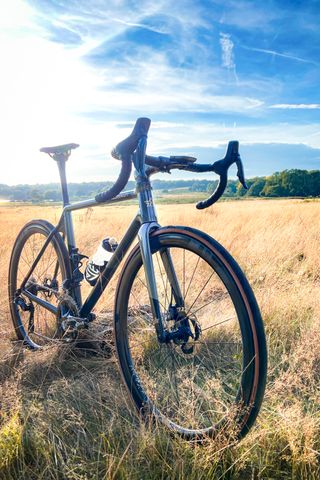
As far as speed goes, I was pleasantly surprised with the pace of the RM3. Most significantly I was switching between the RM3 and a Cervelo R5 during my time testing. It was a window of time when I surprised myself with a handful of PRs on local circuits I hadn’t touched in years, and more often than not I was scoring them on the RM3 despite it not having a WorldTour race pedigree. Perhaps one factor influencing this was how planted the RM3 felt - it felt like a safe pair of hands saying: don’t worry, ride fast, I’ve got your back.
Descending one particular local road, I often pick bikes apart depending on how much I need to brake to feel confident on one sweeping corner. The RM3 was one of the few bikes I found myself able to hold off the brakes altogether and feel confident to freewheel through the bend. Beyond that, it was consistently a bike that let me push into corners and really test the limits of my tyre tread.
I was at a loss to fault the Argonaut’s ride quality, and I think a major factor in that was that the brand offers the complete build as a well-conceived holistic package.
The understated branding on the wheels means it might be easy to miss that this is Argonaut’s own brand 43 road wheelset. These are not made in-house in Oregon but are Argonaut’s design, outsourced to Taiwan. Built with 23mm internal width they hit the all-round versatility of the RM3 well, and Farver argued were more a statement of the brand’s desire to make a wheel that fit the bike, than become a wheel business. The bar and stem - Enve designed but with Argonaut’s paint - were perhaps overbuilt but a rigid, light and fetching addition to the bike.
Hitting my scales at a lean 7.3kgs, the RM3 also had little to criticise from the weight perspective. I wasn’t lucky enough to sample any alpine climbs on the RM3, but felt it would be a first-choice climber's bike for a long weekend in the mountains.
So that leads me to the only drawback I could identify, and it’s the elephant in the room.


Verdict
With dream bikes of this calibre, the biggest barrier to most would-be owners is always price, and it’s hard to contextualise the cost of the Supernaut Argonaut RM3 - at an eye-watering $15,000 (roughly £11,800 in currency exchange terms at the time of writing).
To get a full custom build will potentially cost more, with the frame alone costing $8,500 with the groupset, wheels and finishing kit to add.
If your goal is a very nice custom bike, perhaps you can get something more artisan in steel for half the price, coupled with a more artistic and unique bike builder. Perhaps if you want something fast you can hunt out a mass-manufactured WorldTour aero bike far cheaper.
Yet you can also spend a similar amount on the former or the latter. Trek’s top-tier Emonda costs slightly over $15,000/ £12,000 in some specs, while custom titanium or steel frames can easily stretch to £15,000 and beyond. Argonaut’s premise of combining engineering performance with bespoke artisanal bike building, then, is exceptionally expensive, but paradoxically not bad value.
That said, the performance and pennies aren’t what would influence me when it comes to a dream bike like the RM3. Overwhelmingly, the bike is about aspiration, exceptional engineering, idyllic ride quality and stunning aesthetics - to me, it hits those points dead on. In so doing puts it in a small elite of true fantasy bikes.
Would I buy the RM3? I’m afraid not. Will I dream of buying it? I will, for a very long time indeed.
| Design and aesthetics | Simply stunning looks, and a compelling design story | 10/10 |
| Build | Well conceived and brought together with an ideal finishing kit | 10/10 |
| Performance, handling and geometry | A perfect fusion of high end performance with custom ride quality | 10/10 |
| Weight | No concessions to aerodynamic profiles keep the weight at a low 7.3kgs for this level of spec | 10/10 |
| Value | An exceptionally expensive bike, yet highly competitive in its space | 9/10 |
| Overall | Row 5 - Cell 1 | 98% |

Peter Stuart has been the editor of Cyclingnews since March 2022, overseeing editorial output across all of Cyclingnews' digital touchpoints.
Before joining Cyclingnews, Peter was the digital editor of Rouleur magazine. Starting life as a freelance feature writer, with bylines in The Times and The Telegraph, he first entered cycling journalism in 2012, joining Cyclist magazine as staff writer. Peter has a background as an international rower, representing Great Britain at Under-23 level and at the Junior Rowing World Championships.
